When you see a massive 18-wheeler thundering down the highway, have you ever wondered, "How much horsepower does a semi have?" or "How much torque does a semi truck produce?"
Semi trucks are the backbone of the freight industry, hauling thousands of pounds across continents. But their power is as much about efficiency, durability, and engineering excellence as it is about brute strength. Modern rigs pack 500-600 horsepower and 1,650-2,050 lb-ft of torque—enough to haul 80,000 lbs with ease. Their turbocharged diesel engines are engineering marvels, built to run a million miles.
Aero optimizations and advanced tech like predictive cruise control maximize efficiency. Some even have 3,000 lb-ft torque monsters for extreme hauling. Plus, their 18-speed transmissions let drivers harness every ounce of power. From long-nose classics to futuristic electric semis, these beasts keep the world moving. In this deep dive, we’ll explore:
- How much horsepower does an 18-wheeler have? (Spoiler: It’s more than most sports cars!)
- How much torque do semi trucks have? (Hint: Enough to move mountains.)
- Why semi horsepower matters—and how it impacts performance.
- The most powerful semi trucks on the road today.
See also:
How Much Horsepower Does A Semi Truck Have? Breaking Down 18-Wheeler HP

Most modern semi trucks pack between 400 to 600 horsepower, with high-performance models reaching 700+ HP. Horsepower is the soul of a semi—raw energy tamed into motion.
One horsepower equals 550 ft-lbs of work per second; a 600hp truck unleashes 330,000 ft-lbs every second, like 600 stallions charging in unison. Torque is the muscle, but horsepower is the stamina, pushing 80,000 lbs down the highway at 70 mph But why so much?
- Heavy loads: A fully loaded 18-wheeler can weigh 80,000 lbs (36,287 kg).
- Long hauls: Maintaining speed on steep grades demands relentless power.
- Efficiency: More semi HP means better fuel economy under load.
Semi Truck HP by Engine Type
| Engine Type | Horsepower Range | Torque (lb-ft) |
| Standard Diesel | 400 - 550 HP | 1,450 - 1,850 |
| High-Performance | 550 - 700+ HP | 1,850 - 2,050+ |
| Natural Gas (LNG/CNG) | 400 - 500 HP | 1,350 - 1,600 |
Fun Fact: The Volvo D16 engine delivers up to 600 HP and 2,050 lb-ft of torque—enough to tow three average houses!
Variation by Manufacturer
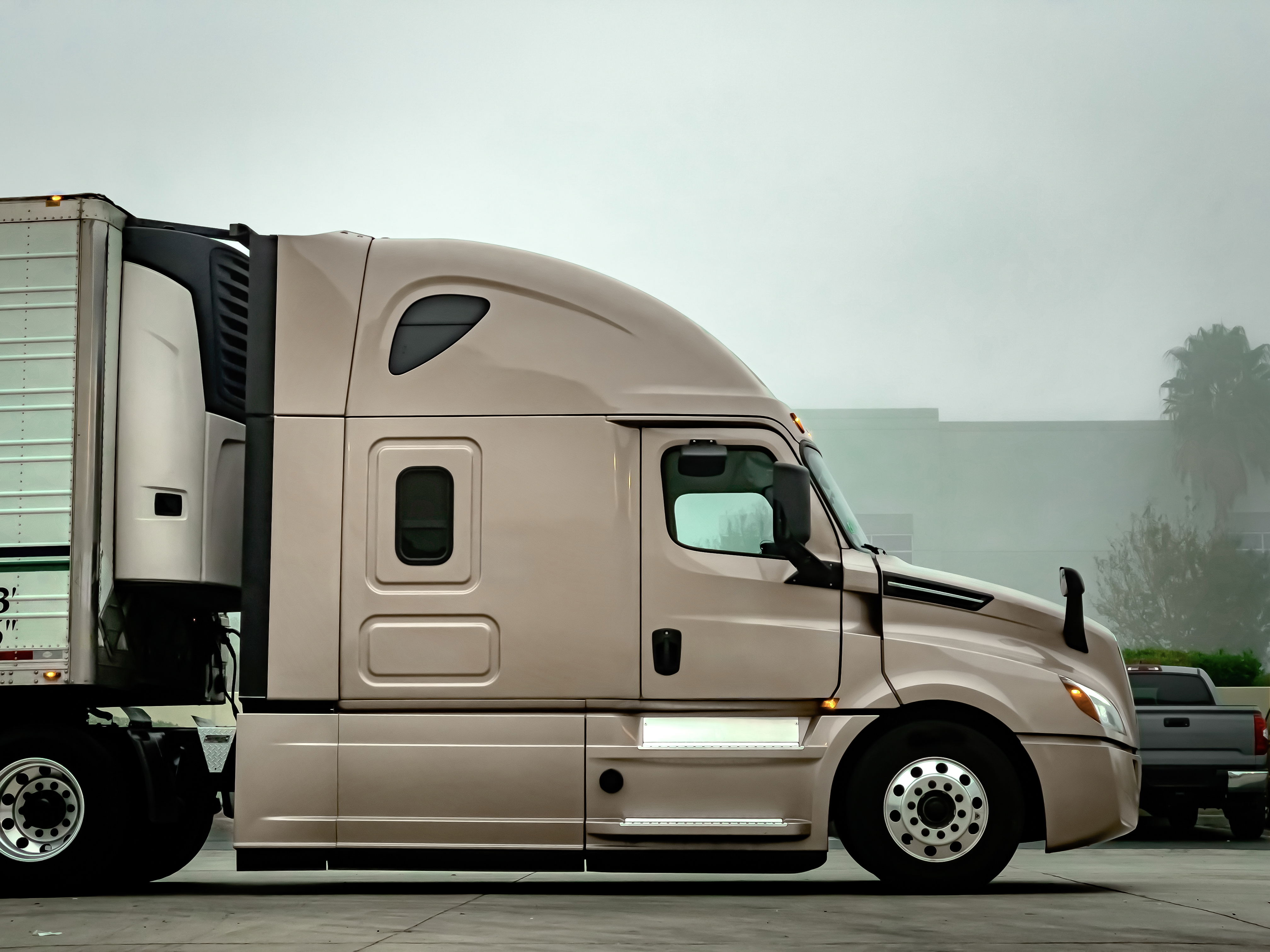
Different truck manufacturers offer various engine configurations, leading to a wide range of horsepower options. Some brands focus on maximizing power for heavy-duty tasks, while others emphasize fuel efficiency and lower emissions.
This diversity allows fleet managers to choose trucks that best meet their operational needs. Let’s dive deeper into the engine landscape of semi trucks.
Detroit Diesel DD16
- Inline-6, 15.6L – A torque monster (2,050 lb-ft) with asymmetric turbocharging for instant boost.
- Power: 505-600 HP – Optimized for long-haul efficiency with BlueTec® emissions tech.
Cummins X15
- Inline-6, 15L – Flexes up to 2,050 lb-ft, with a "torque-shaping" ECU for adaptive power delivery.
- Power: 400-605 HP – Features a high-pressure common rail for cleaner combustion.
Volvo D13
- Inline-6, 12.8L – Turbo-compounding recaptures exhaust energy, boosting efficiency.
- Power: 375-500 HP – 1,950 lb-ft torque with wave-piston design for reduced friction.
PACCAR MX-13
- Inline-6, 12.9L – Lightweight compact design, yet 1,850 lb-ft torque.
- Power: 405-510 HP – Uses dual-stage turbocharging for seamless power bands.
Scania DC16 (V8 Option)
- 16.4L V8 (Rare) – A 730 HP, 3,500 lb-ft beast for extreme hauling (mining, heavy transport).
- Mostly Inline-6 – Their 13L I6 hits 2,300 lb-ft with SCR-only emissions.
Emerging: Electric and Hydrogen
- Tesla Semi (3 Motors) – ~1,050 lb-ft per wheel, instant torque.
- Nikola Hydrogen FCEV – 536 HP, fuel-cell stacks for long-range zero emissions.
How Much Torque Does A Semi Have? The Real Muscle Behind 18-Wheelers
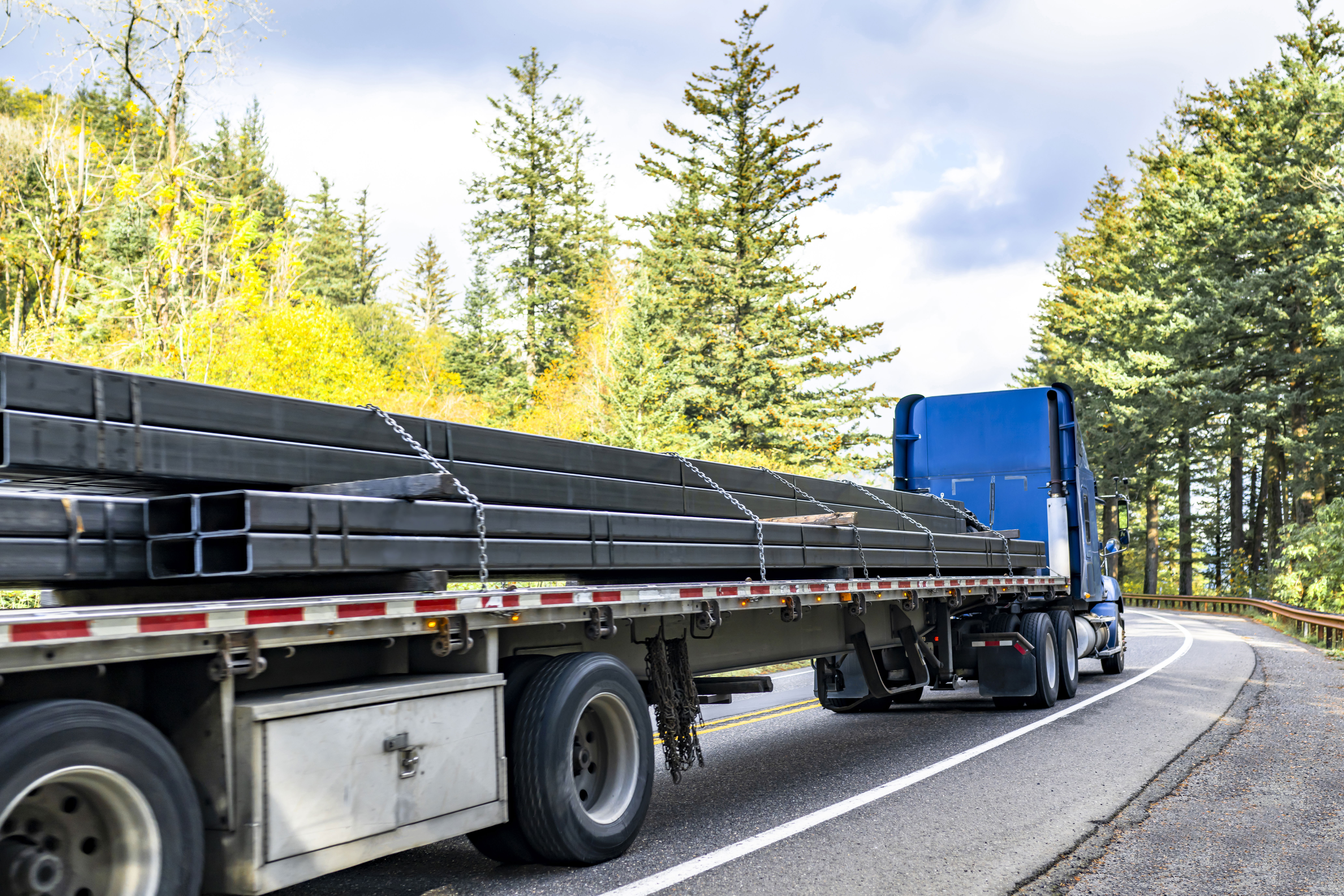
While semi horsepower grabs headlines, torque is the unsung hero. Torque, measured in pound-feet (lb-ft), is another critical element in understanding a semi-truck's power. It refers to the rotational force produced by the engine's crankshaft. It is what gives the vehicle the ability to move forward, especially when hauling heavy loads.
While horsepower measures peak power, torque measures the engine's ability to perform work, particularly at lower speeds. Torque is the hidden brute force of a semi—2,050 lb-ft twists steel like taffy, yet it’s delivered with precision. Modern turbos spool at idle, bending physics to make 80,000 lbs feel light.
Some engines "torque-shape" their curve, secretly adjusting fuel pulses for max grip without wheel slip. Even at 1,500 RPM, a Cummins X15 can out-pull a Ferrari at redline. This silent, diesel-fed muscle lets a semi climb a 6% grade at 65 mph.
Why Torque Matters More In Semis
- Torque = Rotational force (gets the truck moving).
- Horsepower = Sustained power (keeps it moving).
Most semi truck torque figures range between 1,450 to 2,050 lb-ft—far surpassing consumer trucks. It is calculated by multiplying force by distance—specifically, the applied force (in newtons or pounds) times the length of the lever arm (in meters or feet).
The angle between the force and lever matters, with maximum torque occurring at 90 degrees. For engines, a key formula links torque to horsepower: Torque = (HP × 5,252) ÷ RPM, where 5,252 is a constant that converts units.
For example, a 500 HP engine running at 1,800 RPM generates roughly 1,453 lb-ft of torque. This rotational force is what gets heavy loads moving, making it far more critical than horsepower for semi-truck performance.
Torque Comparison: Semi vs. Consumer Vehicles
| Vehicle | Torque (lb-ft) |
| Average Semi Truck | 1,450 - 2,050 |
| Ford F-150 (3.5L EcoBoost) | 400 - 500 |
| Bugatti Chiron | 1,180 |
Mind-blowing stat: A Cummins X15 engine produces 2,050 lb-ft of torque—enough to spin the Earth (if it had a big enough gearbox).
What Determines A Semi Truck’s Horsepower?
Several factors influence how much HP a semi has:

Engine Size and Configuration
- Displacement: Most semi truck engines are 12L to 16L (compared to a car’s 2L-5L).
- Turbocharging: Forced induction boosts power without sacrificing efficiency.
Transmission and Gearing
- Manual vs. Automated Manual (AMT): Modern AMTs optimize power delivery.
- Gear Ratios: More gears = better power distribution (some have 18-speed transmissions!).
Load and Terrain
- Mountainous routes demand higher semi horsepower.
- Flat highways allow for lower RPM cruising.
A semi truck’s horsepower is shaped by real-world engineering choices. Take the Detroit DD16 in Freightliner Cascadias—its massive 15.6L displacement allows for 600 HP, while the PACCAR MX-13 in Peterbilt 579s uses advanced turbocharging to hit 510 HP efficiently.
Transmission tech plays a huge role: Volvo’s I-Shift AMT (used in VNL models) dynamically adjusts gear ratios to maximize power delivery, while Kenworth’s 18-speed manual in W990s gives drivers precise control for heavy loads.
Terrain dictates needs, too—hauling through the Rockies demands the Cummins X15’s 605 HP in Kenworths, while the Freightliner eCascadia’s 475 HP electric motor thrives in urban routes. Every component is optimized for real-world demands.
10 Most Powerful Semi Trucks On The Road
1. Freightliner Cascadia (Detroit DD16) – Up to 600 HP
- Torque: 2,050 lb-ft
- Best for: Long-haul efficiency
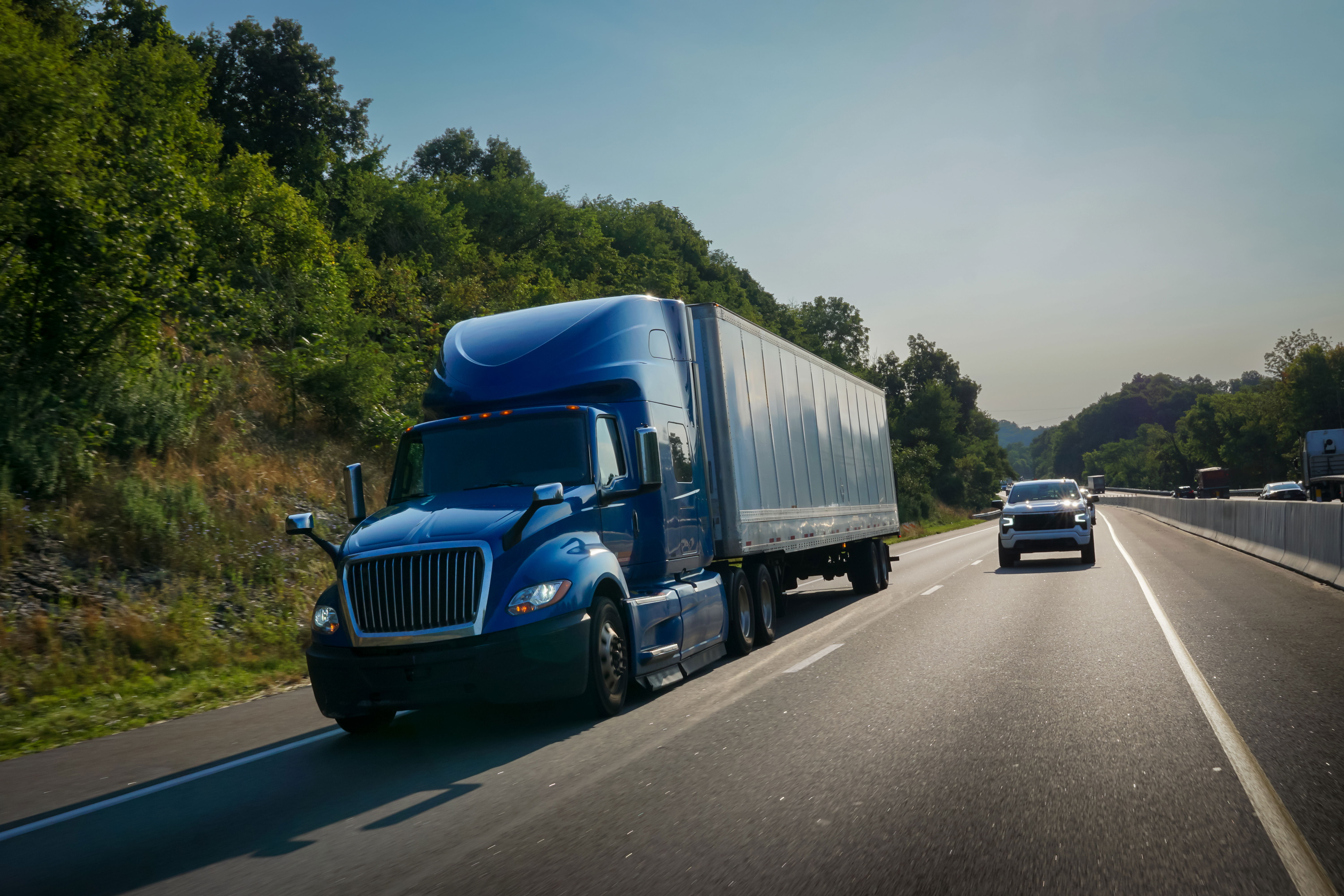
The Freightliner Cascadia with Detroit DD16 is North America's benchmark long-haul truck, packing a 15.6L turbo-diesel delivering 600 HP and a staggering 2,050 lb-ft of torque. Its Turbo Compound system recovers exhaust energy for 6% better fuel efficiency.
The DT12 automated transmission optimizes power delivery, while aerodynamic design saves 8% on fuel versus competitors. With 1.5 million-mile B50 life expectancy and integrated Detroit Connect telematics, it dominates highways with brute strength and smart tech. A true freight king.
See also:
2. Volvo VNL (D16 Turbo Compound) – Up to 600 HP
- Torque: 2,050 lb-ft
- Best for: Heavy-duty freight
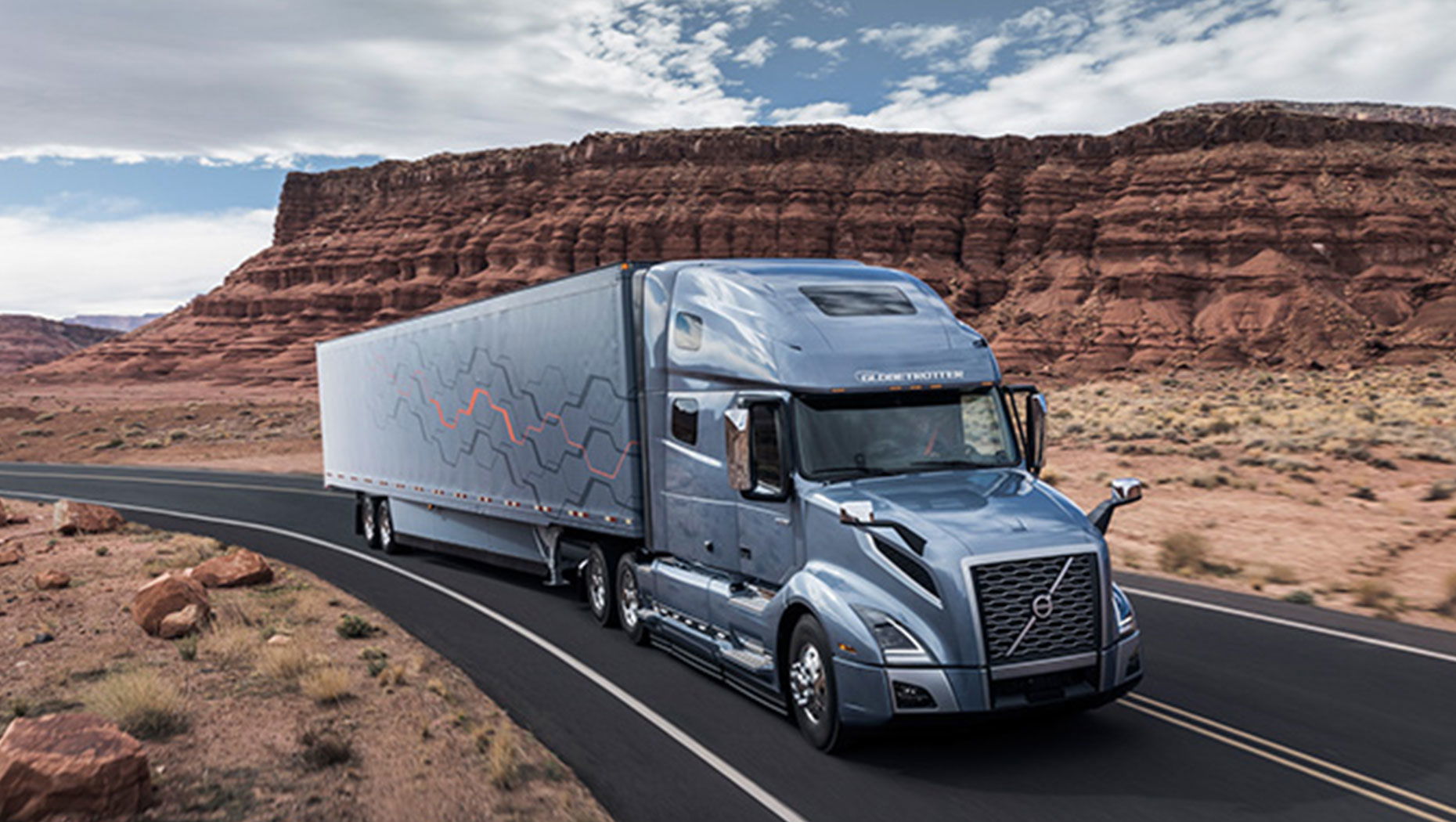
The Volvo VNL with D16 Turbo Compound redefines efficiency in heavy hauling, delivering 600 HP and 2,050 lb-ft torque from its 16L engine. Volvo’s patented wave-piston design and two-stage turbocharging boost fuel economy by 10% while meeting EPA standards.
Paired with the I-Shift automated transmission, it predicts terrain for seamless gear shifts. The 2.1 million-mile engine lifespan and Volvo Connect telematics make it a data-driven powerhouse. Built for brutal loads, it’s the Swiss Army knife of semis.
3. Peterbilt 579 (PACCAR MX-13) – Up to 510 HP
- Torque: 1,850 lb-ft
- Best for: Fuel economy
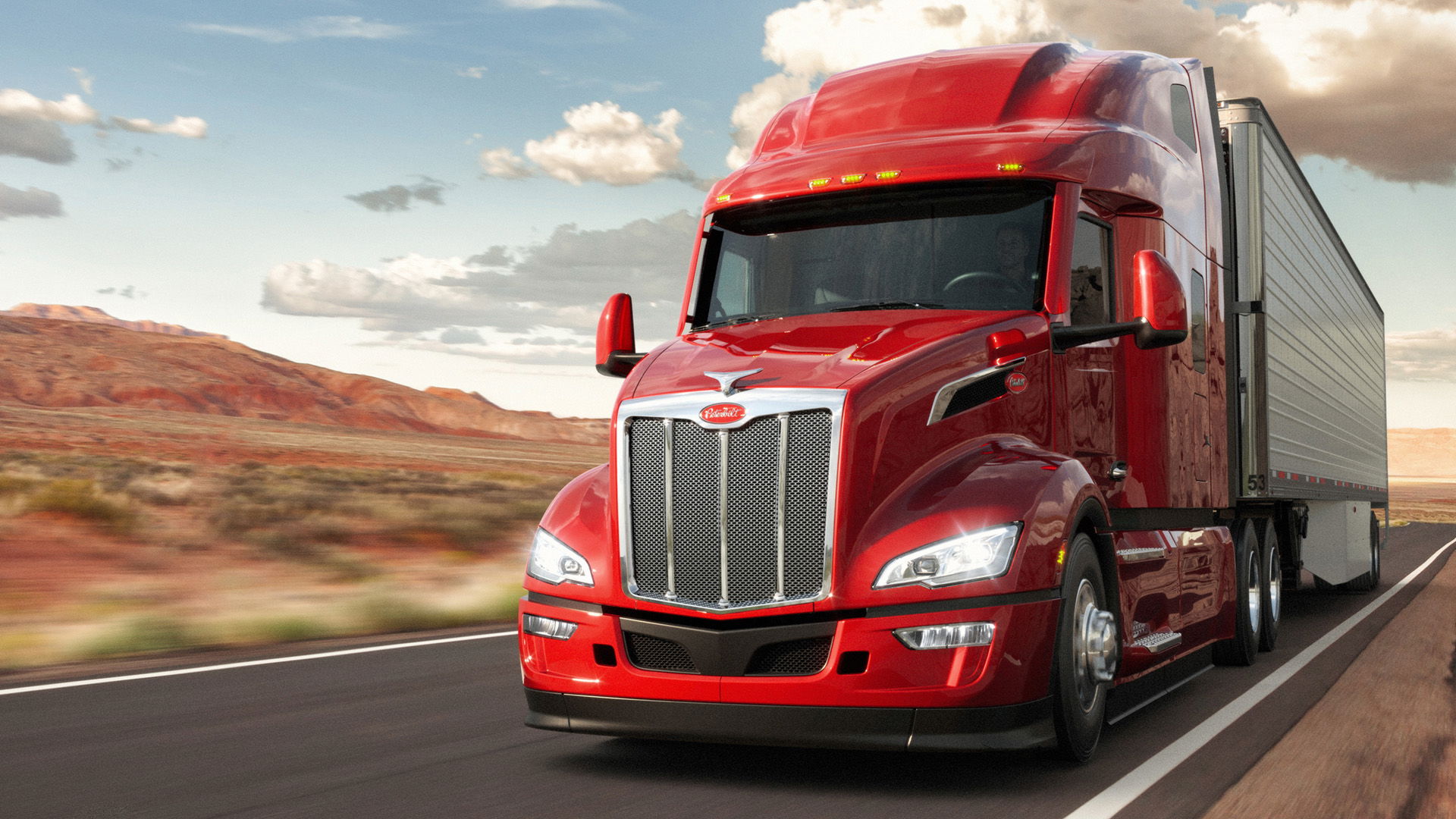
The Peterbilt 579 with PACCAR MX-13 combines brute strength with surgical precision, delivering 510 HP and 1,850 lb-ft torque from its compact yet mighty 12.9L engine. Engineered for maximum uptime, its dual-stage turbocharger and common-rail injection achieve 8% better fuel efficiency than competitors.
The PACCAR TX-12 automated transmission learns driving patterns for optimized shifts, while the ultra-light aerodynamic design cuts drag by 12%. With 1.2 million-mile B50 life and integrated PACCAR Connect fleet tech, it’s the ultimate balance of power and precision. A highway scalpel.
4. Kenworth W990 (Cummins X15) – Up to 605 HP
- Torque: 2,050 lb-ft
- Best for: Raw power
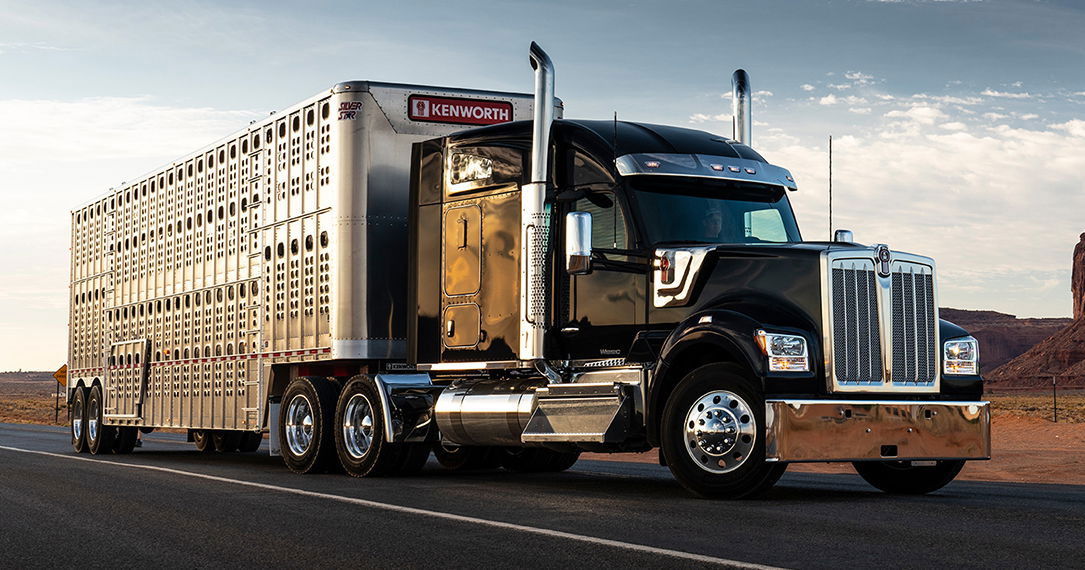
The Kenworth W990 with Cummins X15 is the undisputed king of raw American muscle, pumping out 605 HP and 2,050 lb-ft torque from its battle-tested 15L engine. Its Xtra-High Pressure Injection system delivers instant response, while the HELA™ piston design withstands brutal loads.
The 18-speed Eaton manual transmission puts total control in the driver's hands, making it the choice for heavy haulers and oversized loads. With 1.5 million-mile durability, classic Kenworth craftsmanship, and an iconic long-nose design, this is the last true gladiator of the highway.
5. Mack Anthem (MP8 Turbo Compound) – Up to 505 HP
- Torque: 1,860 lb-ft
- Best for: Durability in regional hauling
- Why it stands out: Mack's guard dog engine braking system makes it ideal for mountainous terrain.
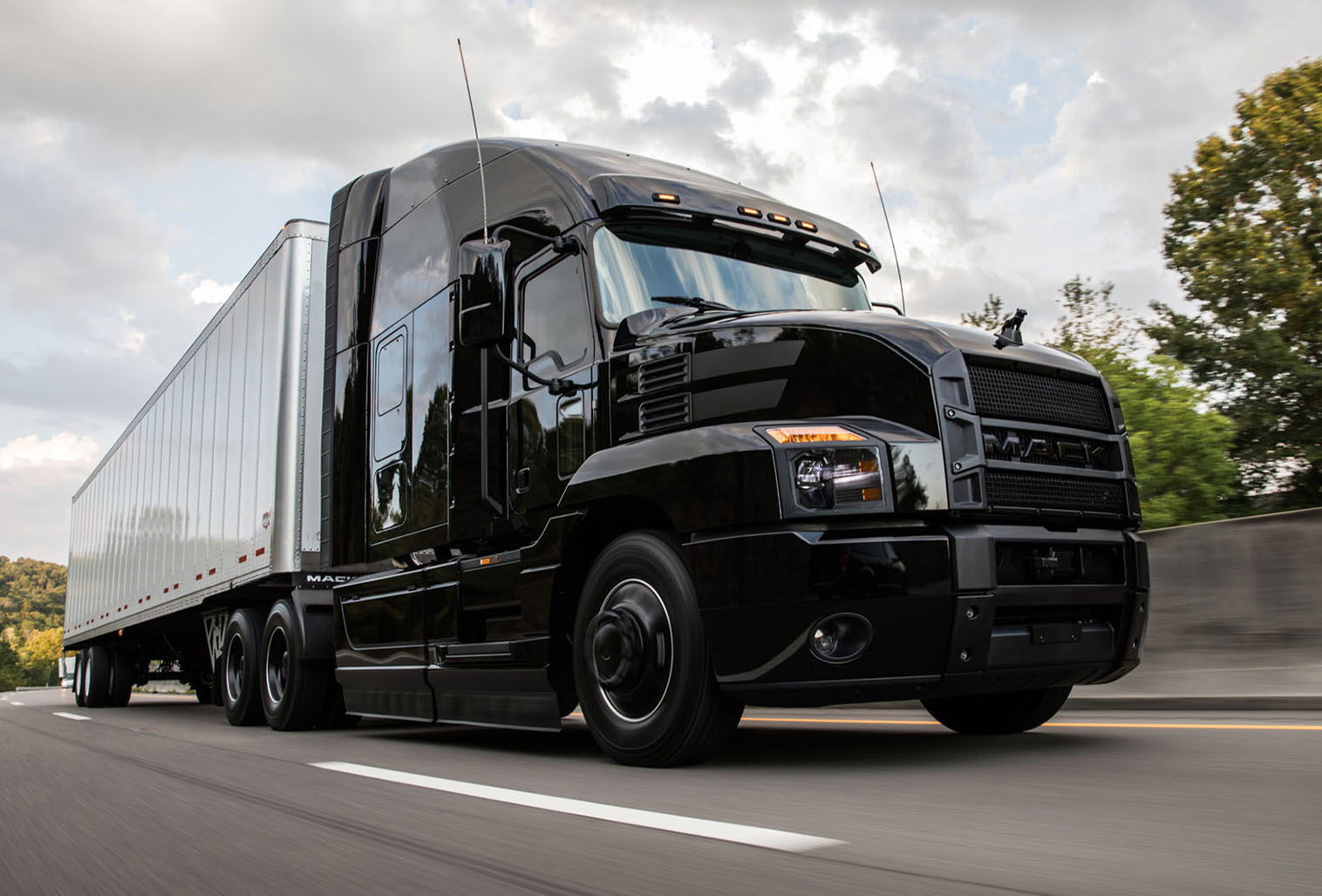
The Mack Anthem with MP8 Turbo Compound is a no-nonsense workhorse, delivering 505 HP and 1,860 lb-ft torque from its 13L powerplant. Mack's Turbo Compound technology recaptures wasted energy, boosting fuel efficiency by 7% while maintaining legendary durability.
The mDrive HD automated transmission is tuned specifically for Mack's GuardDog Connect telematics, which provides real-time performance monitoring.
Built with a 1.2 million-mile B50 life expectancy and Mack's signature bulldog toughness, it dominates regional hauling and vocational applications. This truck doesn't just work hard—it outlasts the competition with its pure Mack grit.
6. Western Star 49X (Detroit DD16) – Up to 600 HP
- Torque: 2,050 lb-ft
- Best for: Extreme vocational applications
- Notable feature: Built for oil fields and heavy construction with reinforced frames.
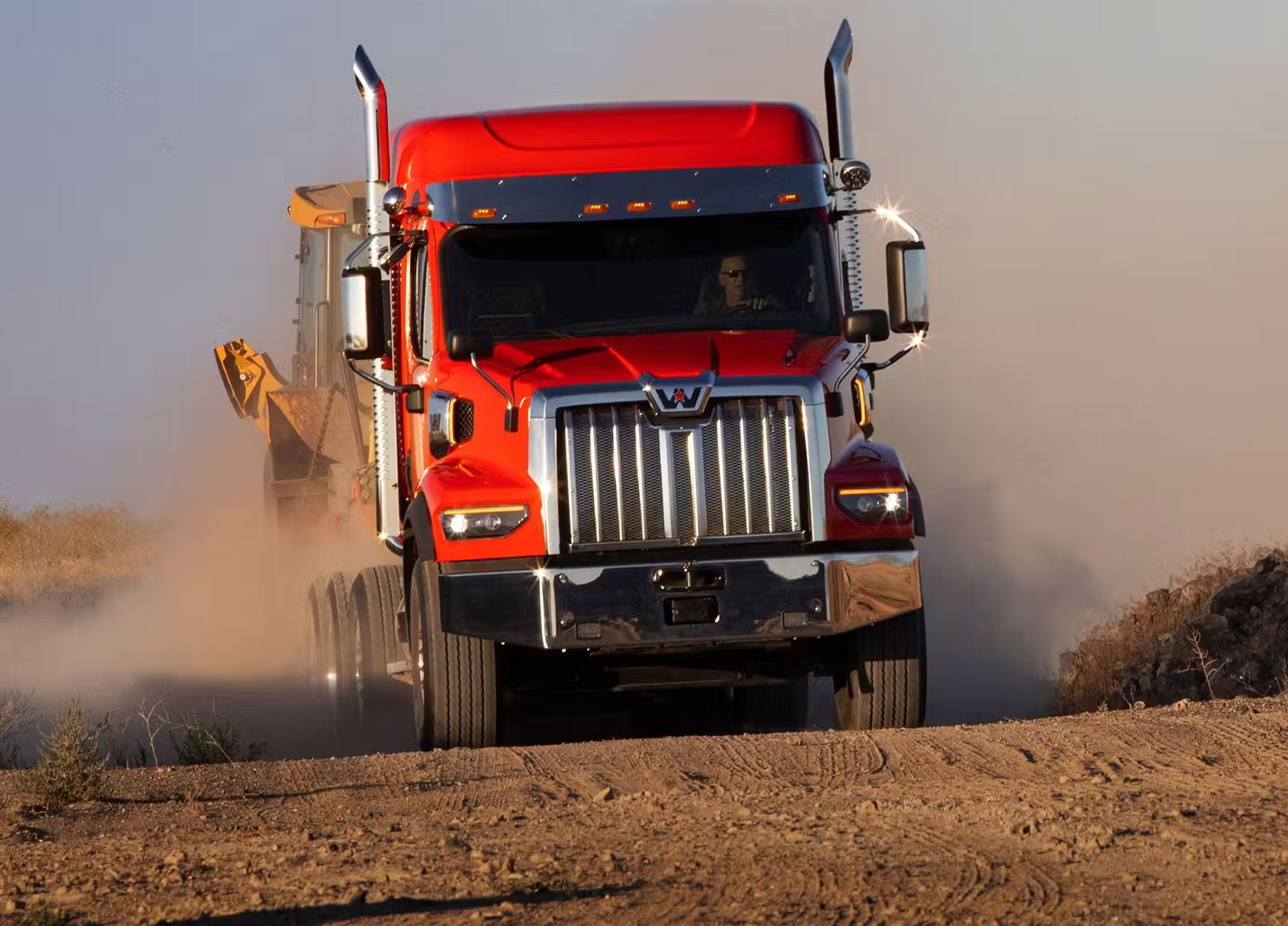
The Western Star 49X with Detroit DD16 is the ultimate off-road warrior, harnessing 600 HP and 2,050 lb-ft torque from its industrial-strength 15.6L engine.
Built for extreme vocational work, its box-section frame withstands 30% more torsional stress than standard trucks while the arctic-grade wiring survives brutal conditions. The Detroit DT12-V transmission features a dedicated off-road mode for rock quarries and oil fields, paired with 4-piston hydraulic brakes for unstoppable control.
With 160,000-lb GCWR capacity and steel bumper-to-bumper construction, this is the truck that conquers jobsites where others fail. Uncompromising power meets indestructible design.
7. International LT Series (Cummins X15) – Up to 605 HP
- Torque: 2,050 lb-ft
- Best for: Fleet versatility
- Key advantage: International's 12-inch digital dash integrates with fleet management systems.

The International LT Series with Cummins X15 is the ultimate fleet workhorse, delivering 605 HP and 2,050 lb-ft torque from its battle-proven 15L engine. Its Dynamic Power Management automatically adjusts output for terrain while the XPI fuel system ensures razor-sharp throttle response.
The 12-inch digital dash integrates seamlessly with International 360° fleet analytics, providing real-time performance tracking.
Built with a 1.5 million-mile B50 life and industry-leading 0.556 drag coefficient, it combines brute strength with unprecedented efficiency. This is precision hauling perfected—where big data meets bigger power.
8. Kenworth T880 (Cummins X15) – Up to 605 HP
- Torque: 2,050 lb-ft
- Best for: Dump trucks and heavy hauling
- Standout trait: The industry's toughest vocational truck with 110,000-lb GCW ratings.
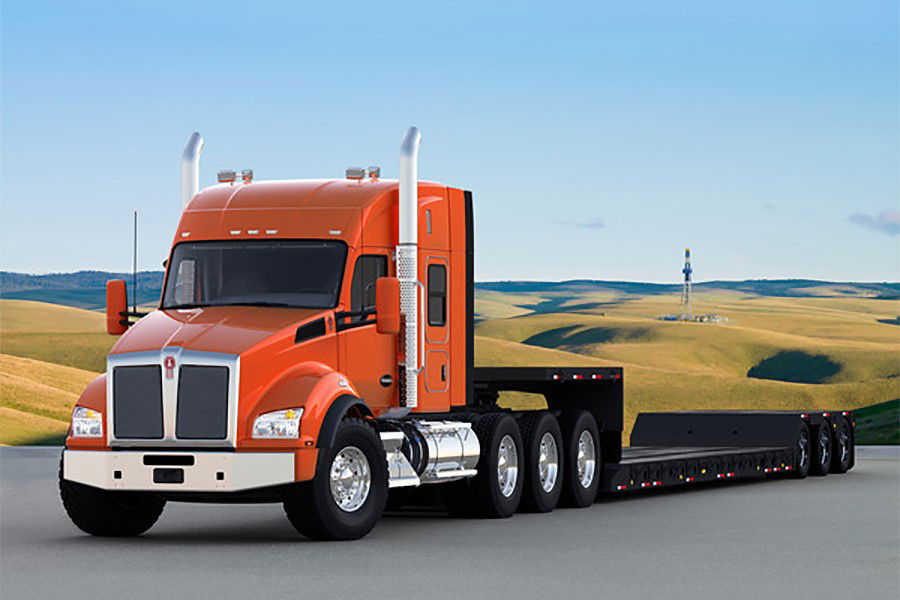
The Kenworth T880 with Cummins X15 is the undisputed champion of vocational hauling, unleashing 605 HP and 2,050 lb-ft torque from its industrial-grade 15L powerplant.
Engineered for extreme duty, its triple-frame rails and 20,000-lb front axle handle crushing weights while the PACCAR 40K rear axles endure brutal job sites.
The Allison 4500 RDS transmission offers seamless power transfer for mixer and dump applications, backed by Kenworth's legendary 3-million-mile chassis life. With 110,000-lb GCWR capacity and steel cab construction, this is the truck that turns impossible loads into paychecks.
9. Freightliner 122SD (Detroit DD16) – Up to 600 HP
- Torque: 2,050 lb-ft
- Best for: Severe service and emergency vehicles
- Unique capability: Designed for fire trucks and super-heavy specialized loads.
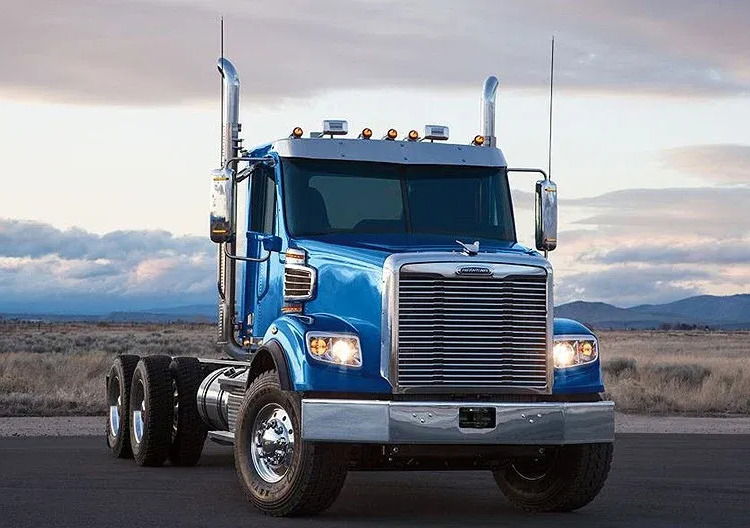
The Freightliner 122SD with Detroit DD16 is the ultimate heavy-service brute, delivering 600 HP and 2,050 lb-ft torque from its overbuilt 15.6L engine. Designed for fire/rescue and extreme hauling, its 10-inch reinforced frame rails and 60,000-psi steel cab withstand catastrophic loads.
The Detroit DT12-O vocational transmission features a dedicated PTO mode for pump operations, while 16.5-inch clutch packs handle endless stop-and-go abuse. With 170,000-lb GCWR capacity and military-grade corrosion protection, this is the truck that answers when failure isn’t an option.
10. Peterbilt 567 (PACCAR MX-13) – Up to 510 HP
- Torque: 1,850 lb-ft
- Best for: Vocational and refuse applications
- Signature feature: Legendary Peterbilt durability with a 30% tighter turning radius than competitors.
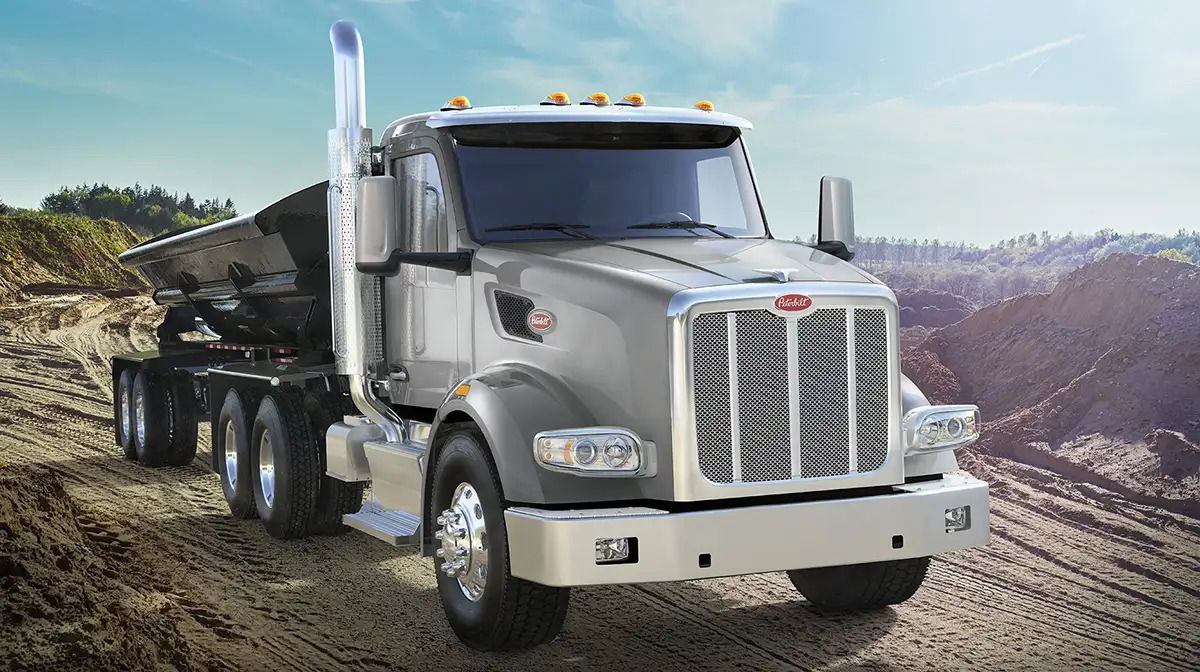
The Peterbilt 567 with PACCAR MX-13 is the ultimate refuse and vocational warrior, delivering 510 HP and 1,850 lb-ft torque from its ultra-durable 12.9L engine.
Built for stop-and-go brutality, its 50%-thicker frame rails and sealed electrical system laugh at landfill conditions while the 30% tighter turning radius outmaneuvers city obstacles. The PACCAR TX-8 automatic transmission pairs with 20K front axles to handle endless compaction cycles, all wrapped in Peterbilt's legendary 3/16-inch steel cab.
With 1.2 million-mile B50 life and 100% stainless steel exhaust, this is the cockroach of trucks—it'll outlive civilization itself. Garbage never had such glamour.
See also:
Bonus
Scania R730 V8: European Beast
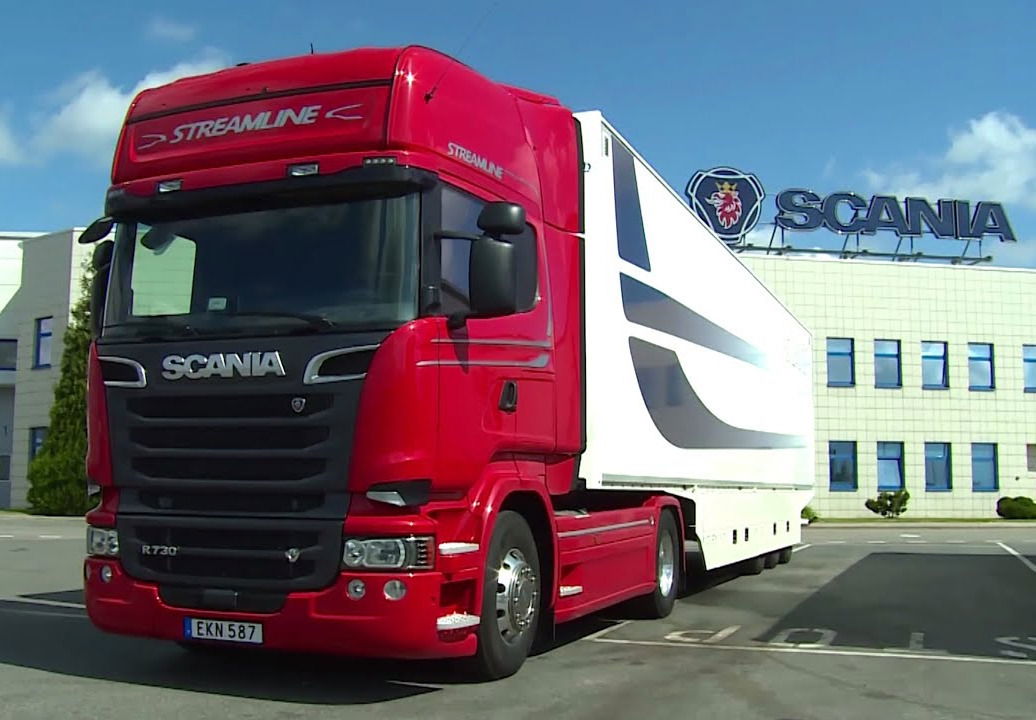
While not sold in North America, the Scania R730 V8 deserves mention as the world's most powerful production semi truck at 730 HP and 3,580 lb-ft of torque—proving what's possible when emissions regulations differ.
Fun Fact: The 605 HP Kenworth W990 and International LT share the same Cummins X15 engine, but gear tuning creates distinct personalities—Kenworth prioritizes low-end grunt, while International optimizes for highway cruising.
How Semi Horsepower Affects Performance
Acceleration and Speed
- 0-60 mph? About 30-45 seconds (but who’s racing?).
- Top speed? Typically governed at 65-75 mph for safety.
Fuel Efficiency
- More semi HP ≠ worse mileage—modern engines optimize power delivery.
- Average MPG: 6-8 MPG (better than you’d think for 80,000 lbs!).
Towing Capacity
- Max legal weight (U.S.): 80,000 lbs (with permits, some exceed this).
- Without a trailer? A semi truck can hit 100+ mph (but don’t try it).
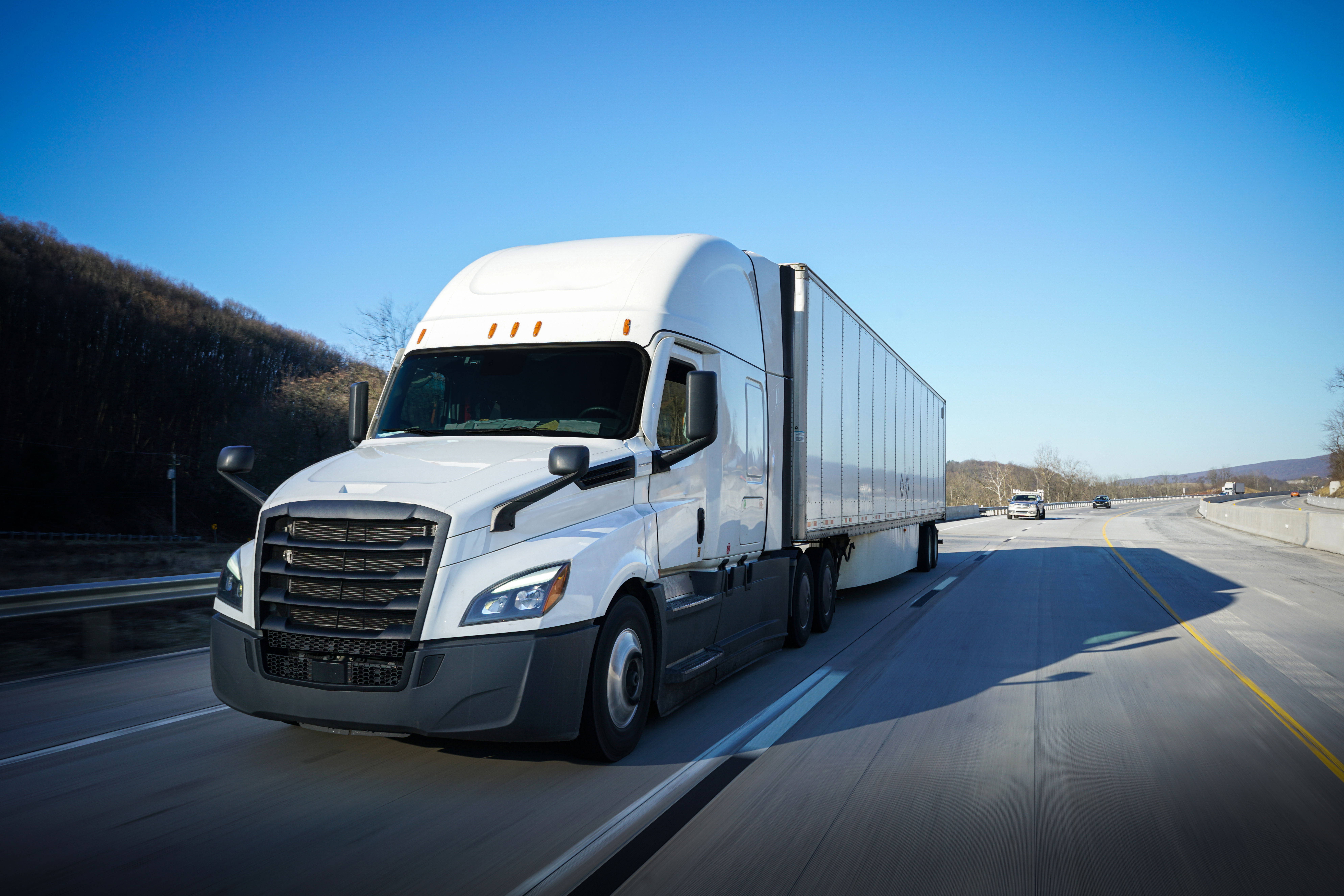
Semi horsepower directly impacts real-world performance in surprising ways. While governed at 65-75 mph for safety, a 600HP Volvo VNL can hit 60 mph in 30 seconds—faster than a 1920s race car.
Modern engines like Detroit's DD16 use variable torque curves to maintain 7 MPG even at 80,000 lbs, proving bigger displacement often means better efficiency. That 80,000-lb limit becomes flexible with special permits—Australian road trains legally haul 300,000 lbs using multiple 700HP prime movers.
Empty, a Cummins X15-powered Kenworth could theoretically reach 120 mph, but brake systems are calibrated for loaded weights, making such speeds dangerously unstable. Horsepower ultimately determines how gracefully a semi handles its working limits.
Future Of Semi Truck Horsepower: Electric And Hydrogen
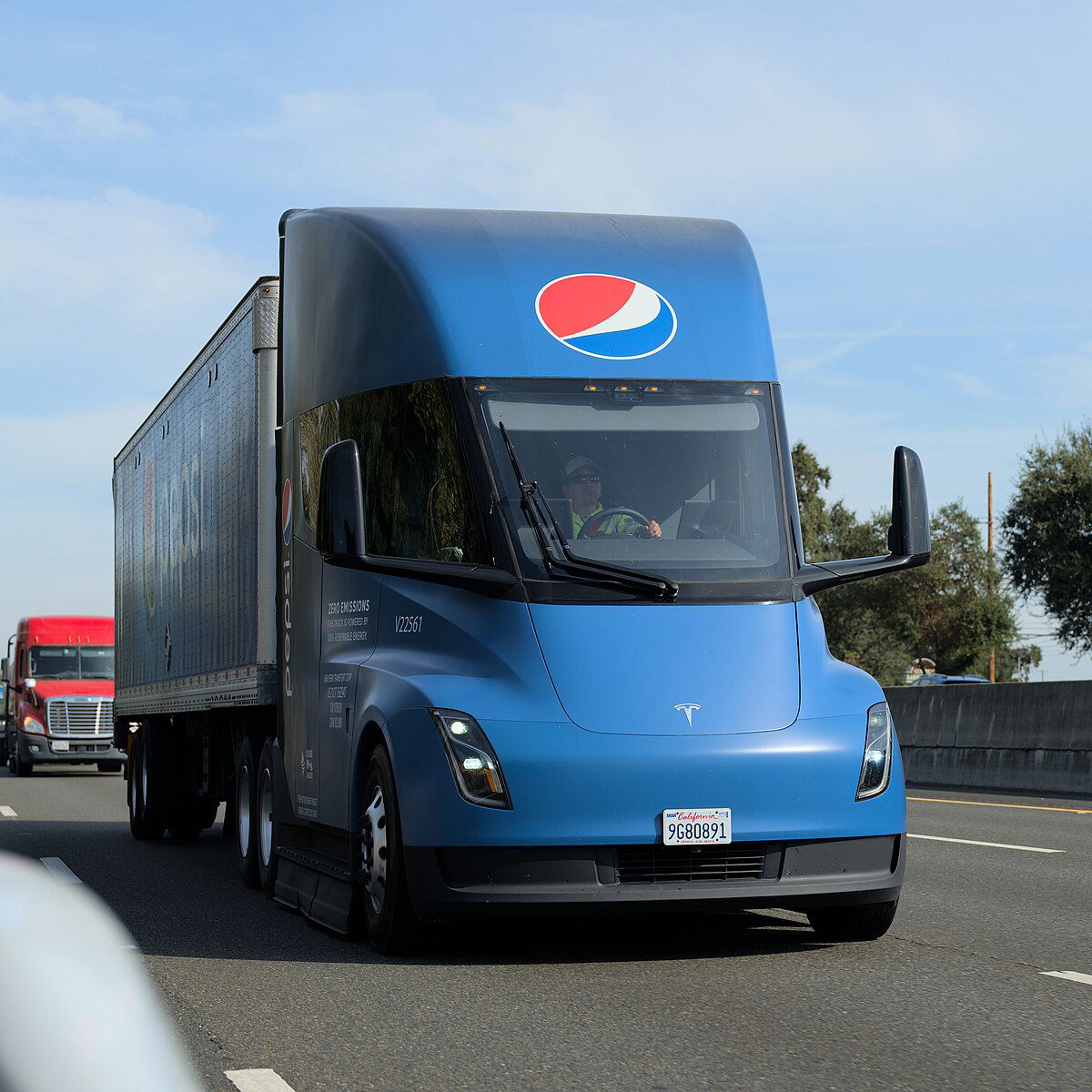
Electric Semis (Tesla, Freightliner eCascadia)
- Horsepower: ~500-700 HP (instant torque!).
- Torque: Up to 1,700+ lb-ft (no gears needed).
Hydrogen Fuel Cell (Nikola, Toyota)
- Expected HP: 500-600+
- Zero emissions, long range.
The future of semi-truck power is being rewritten by electric and hydrogen innovations. Tesla's Semi delivers 1,000 peak HP with 0-60 mph in 20 seconds at 82,000 lbs—performance unthinkable with diesel.
Hydrogen fuel cell trucks like Nikola's Tre FCEV combine 536 HP with 800-mile ranges, solving the charging-time dilemma. Both technologies offer full torque at 0 RPM, eliminating gearshifts and reducing drivetrain wear.
While current battery weight cuts payloads by ~10%, advances in solid-state batteries and hydrogen combustion engines (like Toyota's prototype) promise diesel-like range without emissions.
Prediction: By 2030, electric and hydrogen semis could dominate short-haul routes.
Final Answer: How Much Horsepower Does A Semi Have?
- Average semi horsepower: 400-600 HP (high-performance up to 700+).
- Average semi torque: 1,450-2,050 lb-ft (enough to pull a building).
- Most powerful production semi: Scania R730 (730 HP) (Europe only).
Next time you see an 18-wheeler, remember—it’s a 2,050 lb-ft torque monster with the power of six Ford Mustangs.